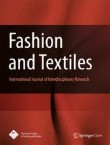The Korean Society of Clothing and Textiles is a non-profit academic organization established to make professional contributions to the progress of scholarly research and development of related industries. The KSCT strives to take an active role in improving the wellbeing of human kind as well as to provide opportunities for individual members to further their professional and academic potential by establishing and vitalizing the networks among the academic and industrial members. The goals of the KSCT are as follows:
- Development of the academic field of clothing and textiles by holding diverse academic programs.
- Dissemination of academic research to the public.
- Establishment as a hub for collaborative networks among academic and industrial organizations.
- Globalization of the activities of the KSCT.
- Networking between related academic organizations.
- Leadership in providing a database for the knowledge and information in the clothing and textile field.
